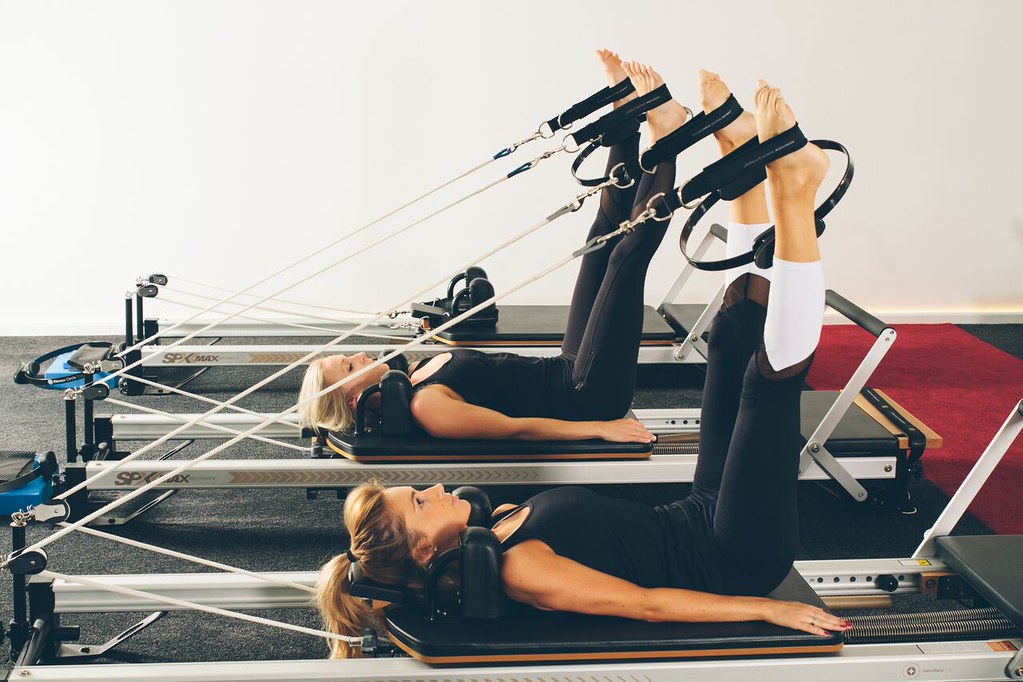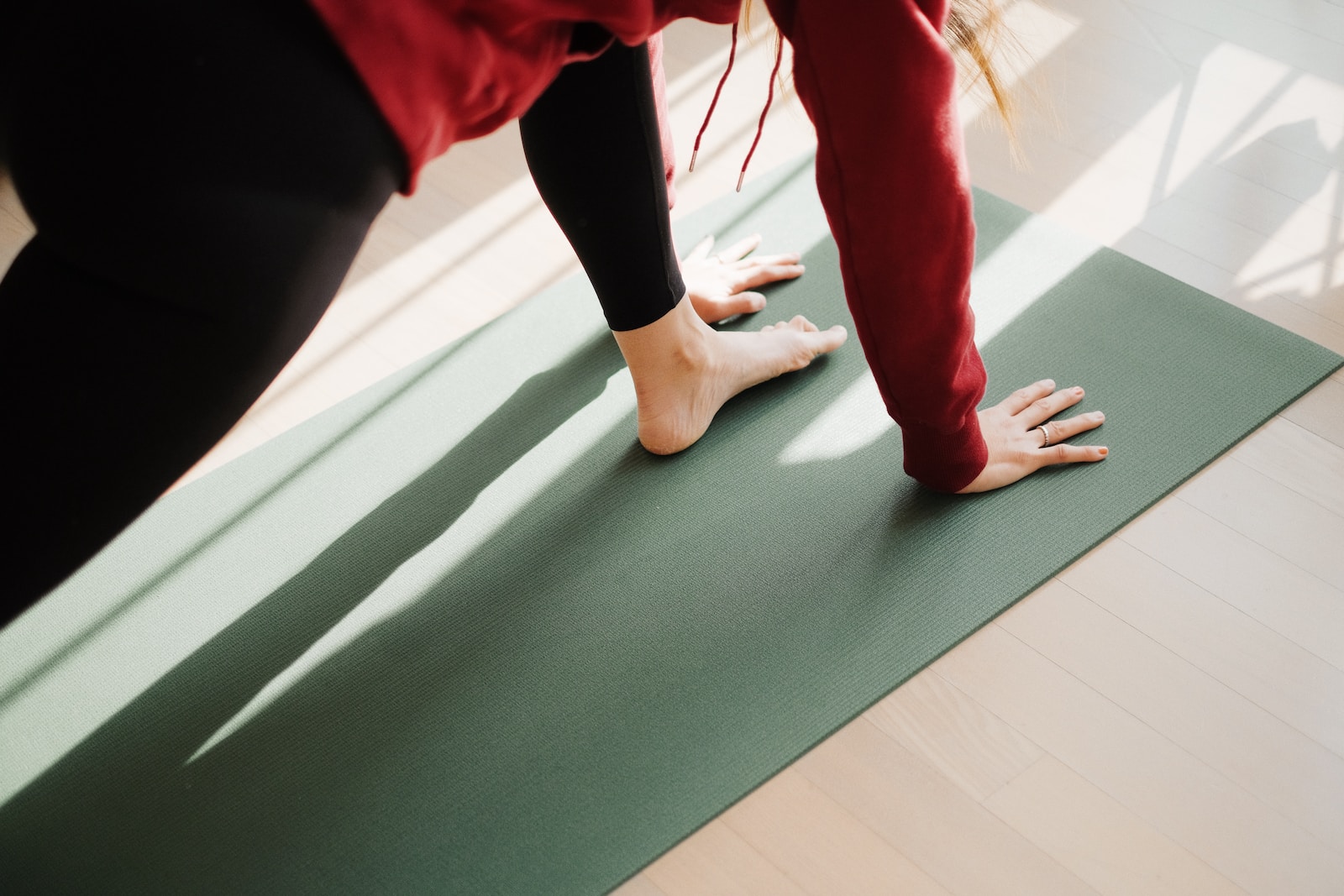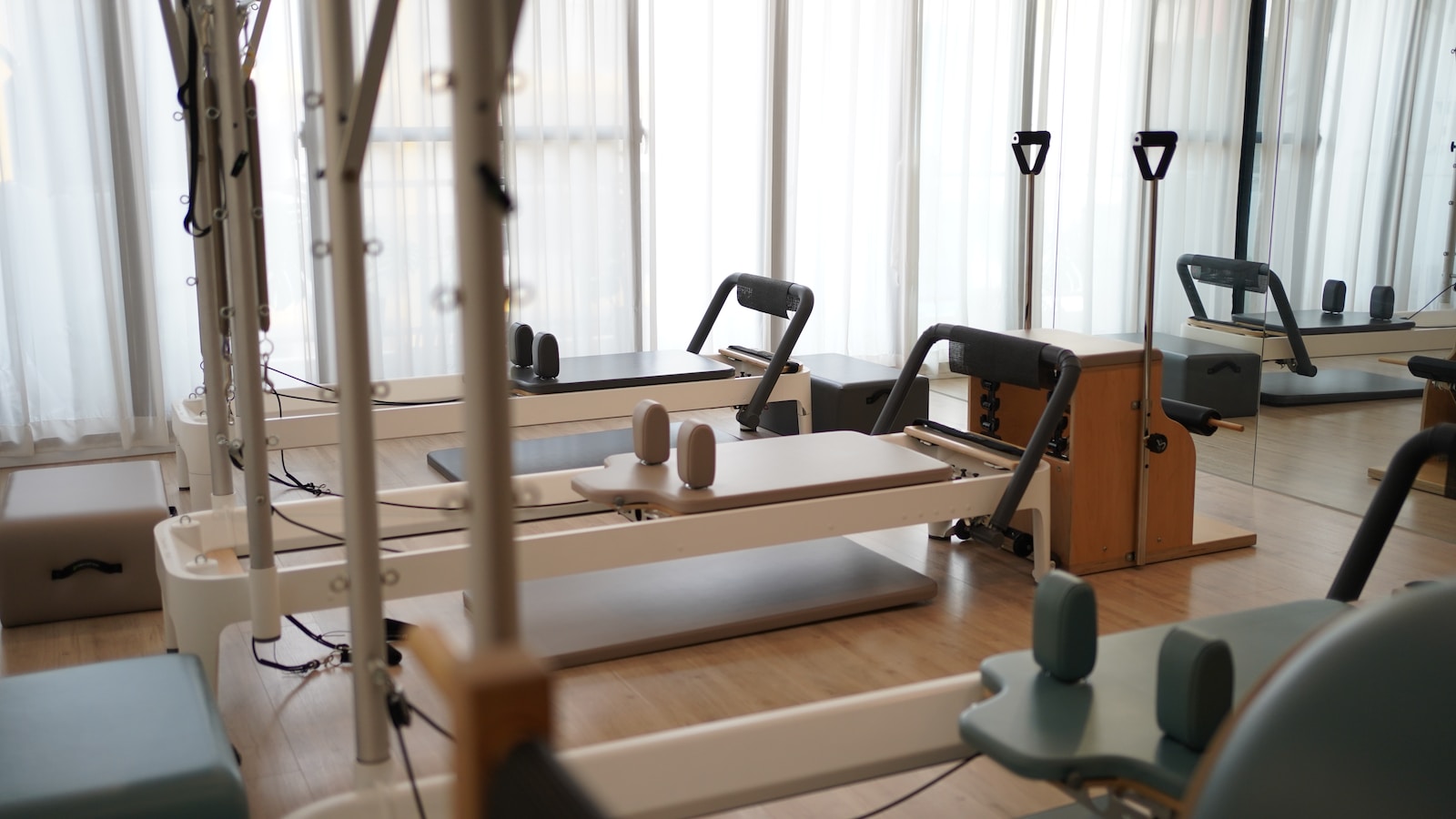Clinical and Fitness Pilates are two distinct approaches to health and well being. Pilates was originally created in the 1920s by Joseph Pilates. It describes a system of exercises that focuses on improving core strength, flexibility, posture, and overall body conditioning. What characterises Clinical Pilates is that it is a personalised and therapeutic pilates program that is guided by a trained Physiotherapist.
Scroll down to learn more about which pilates is right for you. In collaboration with DKB Transformations.

Fitness Pilates
Fitness Pilates is primarily designed to enhance overall fitness and well-being. Group fitness classes are available at gyms and fitness studios, accommodating anywhere from 12 to 20 or more participants per class. The main goals of Fitness Pilates are to increase strength, flexibility and balance. It can be a good choice for individuals looking to tone their muscles, improve posture, and enhance their overall fitness. Participants will generally perform the similar exercises.
Fitness Pilates classes are taught by certified Pilates instructors who may not have a background in Physiotherapy or rehabilitation. These classes are suitable for individuals without significant injuries or medical conditions.
The classes use a combination of mats and small equipment such as resistance bands, foam rollers and stability balls. There is minimal reliance on specialised Pilates apparatus. However, recent trends have seen the expansion of Fitness Pilates using reformers in group classes.

Clinical Pilates
Your physiotherapists or healthcare professionals will tailor a program to your individual needs that targets your specific muscle weaknesses or imbalances. The main objective of Clinical Pilates is to enhance and restore functional movement patterns, alleviate pain and assist in the process of rehabilitation. This form of exercise is conducted in groups of 2 to 5 people and each participant is given their own set of exercises. The small class sizes enable the clinician to carefully supervise each participant and monitor and correct form if required. Clinical Pilates utilises specialised Pilates equipment, including the reformer, Trapese Tables, or Pilates chair. These machines provide different levels of resistance and support, enabling precise and controlled movements that are customised to the patient’s specific condition.
Since Clinical Pilates is individualised, it is a popular alternative for all ages. Older adults can feel confident that their own individual weaknesses are being adequately addressed and often enjoy the slower pace of Clinical Pilates. Furthermore, it can be seen as a better alternative to enhance athletic performance and endurance. For example, exercises can be selected that mimic the demands of the client’s sport.
The main goals of Clinical Pilates are postural re-education, and to improve muscular strength, balance and functional fitness. It is often necessary to target specific injuries and spinal conditions, such as Scoliosis, spinal conditions, osteoporosis, osteoarthritis and sporting injuries. Each individual program emphasises functional movements that can be applied to everyday activities. Engaging in these exercises can enhance overall functional fitness, resulting in increased ease and reduced strain on the body during everyday activities.

Do you need to be injured to participate in Clinical Pilates?
No. Many people initially try Pilates as a means of rehabilitating an injury. However, they often choose to continue practising Pilates in the Clinical format, using specialised equipment to further enhance their strength and achieve their long-term goals, even after their initial injury has healed. Clinical Pilates is an effective preventive measure that can help reduce the risk of future injuries or musculoskeletal problems. Regular practise of this activity can improve body awareness and contribute to the development of balanced muscles and movement.
In summary, Fitness Pilates is primarily geared towards general fitness and well-being and is suitable for those without specific injuries or medical conditions. Clinical Pilates, on the other hand, is a therapeutic approach used to address musculoskeletal issues and is typically prescribed and supervised by healthcare professionals. The choice between the two depends on your goals and any existing health concerns. It is important to consult with a qualified instructor or healthcare provider to determine which approach is most appropriate for your individual needs.





